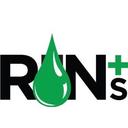EPA finalizes E15 rule, steps back approach to RIN market reform

May 31, 2019
BY Erin Voegele
The U.S. EPA released its final E15/RIN market reform rule May 31. The rule extends the 1-pound-per-square-inch Reid vapor pressure (RVP) waiver to E15. It also includes some reforms to the renewable identification number (RIN) compliance system, although those changes are less severe than those originally proposed by the agency.
For RIN markets, the EPA will now require public disclosure when RIN holdings exceed specified thresholds. The agency will also collect additional data to improve market transparency and enhance EPA oversight. Specifically, this will including the reporting of additional price and affiliate data to EPA.
The agency has finalized two RIN thresholds, which apply to holdings of separated D6 RINs only. If a nonobligated party’s end-of-day separated D6 RIN holdings exceed 3 percent of the total implied conventional biofuel requirement, it has triggered the primary threshold. If an obligated party’s end-of-day separated D6 RIN holdings exceed 3 percent of the total implied conventional biofuel volume requirement and exceed 130 percent of its individual implied conventional renewable volume obligation (RVO), it has triggered the secondary threshold. In the rule, the EPA said it is requiring that parties made calculations of daily RIN holdings and report new information in a quarterly report, including a yes/no certification statement about exceeding the threshold and a list of all RIN-holding corporate affiliates and all contractual affiliates. The agency said it will publish the names of any parties that report exceeding thresholds on its website.
The EPA also said it will require parties to follow certain conventions when reporting RIN prices to the agency and to report whether the RIN transaction was on the spot market or as a result of a term contract. The EPA said that requirement will enhance its oversight capabilities of RIN market behavior.
In addition, the agency confirmed its intention to take nonregulatory steps after promulgation of the rule to update business rules in EMTS to require that both parties in a RIN transaction enter the same RIN price and to employ a third-party market monitor to conduct analysis of the RIN market, including screening for potential anticompetitive behavior.
Advertisement
The EPA said it will not take final action on three of the RIN market reforms that were included in the proposed rule related to RIN retirement frequency, limitations on the parties that can purchase a D6 RIN, and the duration parties can hold D6 RINs. Rather, the agency will defer action on those components of the rule until its analyses of the RIN market and potential manipulation are complete.
Bill Wehrum, EPA assistant administrator for air and radiation Bill, held a media call May 31 to discuss the final rule.
For the RIN market provisions, Wehrum explained that the agency is taking a two-step approach. He noted that there have been concerns by certain people in the oil industry that RIN trading is unnecessarily constrained and may be intentionally manipulated by some market players in an effort to increase the cost of the credits.
The RIN provisions in the final rule add additional measures to the EPA’s market trading program to create greater transparency into how that market works, Wehrum explained. “We believe that by implementing these measures, we’ll have a much clearer view of how the market operates and once we obtain that better view into the market, we’ll be able to determine for sure whether there is manipulation or not—and if there is manipulation, there are other measures we can implement to take care of that.”
“We’re dealing with the market trading side of this issue in a step-wise fashion,” he said. “Step one, today, is to give us better tools to monitor the market. And, if we need to, we’ll take step two later to actually take measures to eliminate the possibility of manipulation, if in fact we find that exists.”
Advertisement
“We’ve looked at the market very closely, and we take very seriously the claims of market manipulation, but so far we have not found clear evidence that there is any significant amount of market manipulation, so in our judgement, the best thing to do at this point is to give ourselves better tools for following what happens in the market and also to vet some ideas of how we could reduce the likelihood or prevent manipulation if we needed to do that based on the better look we get at the market,” Wehrum said.
He said this two-step approach to RIN reform is prudent because some of the measures the agency would have to implement to reduce or eliminate manipulation would also reduce the flexibility and efficiency of the market from an economic standpoint. “We don’t want to implement measures that are not needed and measures that may reduce flexibility and efficiency,” he said.
Representatives of the biofuels industry have spoken out in support of the final rule.
The Renewable Fuels Association applauded the rule, but cautioned that the benefits of year-round E15 could be undermined by the agency’s indiscriminate approval of small refinery exemptions (SREs).
The American Coalition for Ethanol also expressed gratitude for the E15 rule and the agency’s approach to RIN reform, but called on the EPA to stop damaging the ethanol industry through its approval of SREs.
Additional information, including a full copy of the final rule, is available on the EPA’s website.
Related Stories
The U.S. EPA on March 24 asked the U.S. District Court for the District of Columbia to dismiss a lawsuit filed by biofuel groups last year regarding the agency’s failure to meet the statutory deadline to promulgate 2026 RFS RVOs.
The USDA on March 25 announced it will release previously obligated funding under the Rural Energy for America Program To receive the funds, applicants will be required to remove “harmful DEIA and “far-left climate features” from project proposals.
2025 International Biomass Conference & Expo concludes as largest event in a decade and unparalleled industry insights
The 2025 International Biomass Conference & Expo, held March 18-20 in Atlanta Georgia, featured of insightful discussions, cutting-edge technology showcases, and unparalleled networking opportunities.
Nearly 1.52 billion RINs were generated under the RFS in February, down more than 25% when compared to the 2.04 billion that were generated during the same month of last year, according to data released by the U.S. EPA on March 20.
The U.S. EPA on March 20 published updated SRE data showing that four new SRE petitions have been filed under the RFS in the past month. According to the agency, 156 SRE petitions are currently pending.
Upcoming Events










